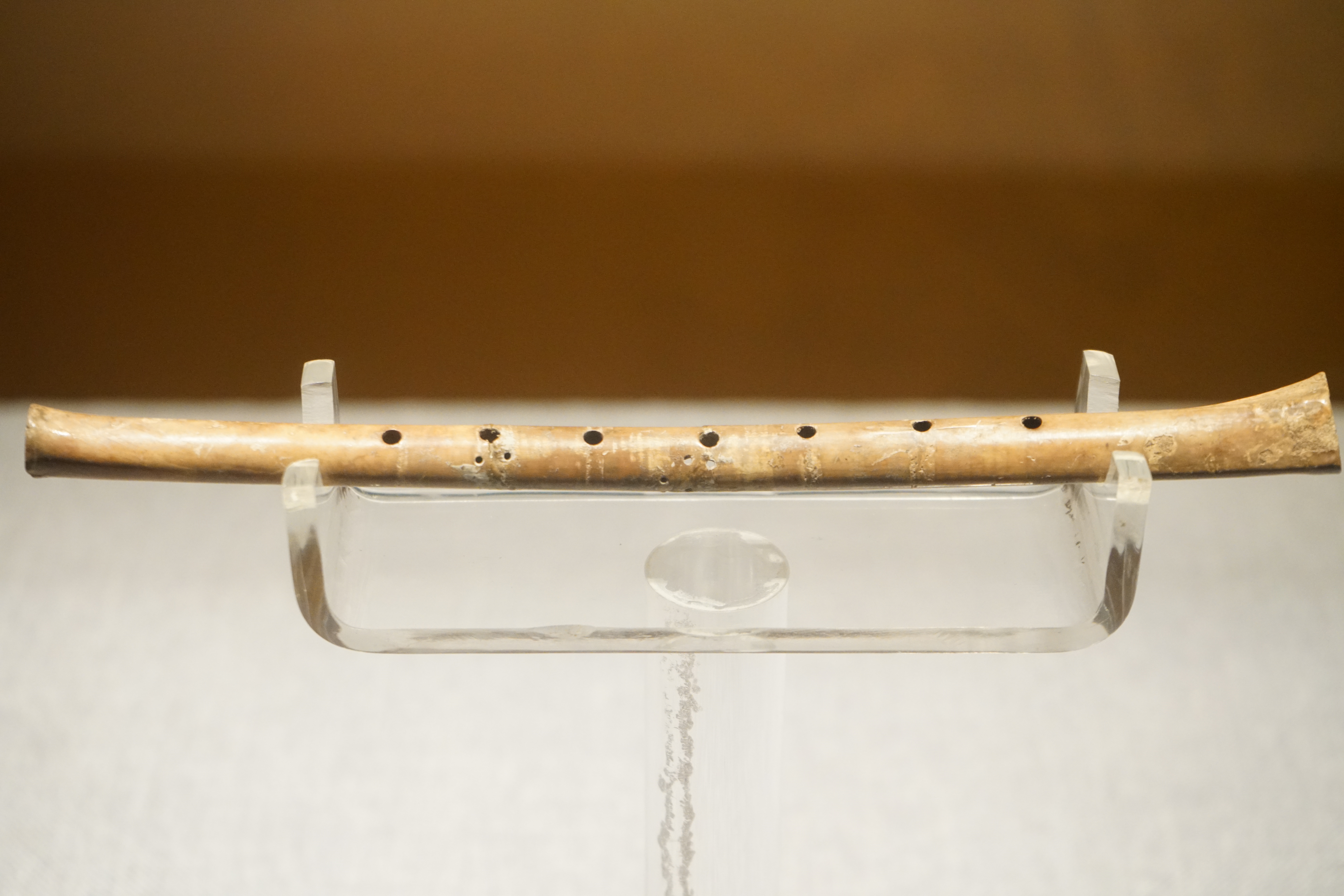Gudi flute on:
[Wikipedia]
[Google]
[Amazon]
 The
The
贾湖骨笛 竖.jpg
Neolithic bone flute.jpg
Neolithic bone flute, Peiligang Culture, Wuyang, Henan, 1987, earliest known musical instrument.jpg
Flutes under Wind Section
*
{{Prehistoric technology End-blown flutes 6th-millennium BC works
 The
The Jiahu
Jiahu () was the site of a Neolithic settlement based in the central plain of ancient China, near the Yellow River. It is located between the floodplains of the Ni River to the north, and the Sha River to the south, north of the modern city ...
gǔdí () are the oldest known musical instruments from China, dating back to around 6000 BCE. ''Gudi'' means "bone flute
The flute is a family of classical music instrument in the woodwind group. Like all woodwinds, flutes are aerophones, meaning they make sound by vibrating a column of air. However, unlike woodwind instruments with reeds, a flute is a reedless ...
" in Chinese.
History
Since 1984, six complete bone flutes, as well as the fragments of at least thirty more, have been excavated from several earlyNeolithic
The Neolithic period, or New Stone Age, is an Old World archaeological period and the final division of the Stone Age. It saw the Neolithic Revolution, a wide-ranging set of developments that appear to have arisen independently in several parts ...
Jiahu culture tombs in Jiahu, Wuyan County, Henan Province, in Central China. They have been dated to 6000 BCE.
Description
The bone flutes have average dimensions of approximately , and are made from the legs of thered-crowned crane
The red-crowned crane (''Grus japonensis''), also called the Manchurian crane or Japanese crane (; the Chinese character '丹' means 'red', '頂/顶' means 'crown' and '鶴/鹤' means 'crane'), is a large East Asian crane among the rarest cran ...
. They are open-ended and vary in the number of their finger holes, from one to eight; the 24 holed version has 23 holes in front and one thumb hole in back. Jiahu bone whistles are much shorter than the flutes, with lengths of , and having only a couple of holes. The number of holes and the spacing between the holes determined the musical range
Range may refer to:
Geography
* Range (geographic), a chain of hills or mountains; a somewhat linear, complex mountainous or hilly area (cordillera, sierra)
** Mountain range, a group of mountains bordered by lowlands
* Range, a term used to i ...
and scale
Scale or scales may refer to:
Mathematics
* Scale (descriptive set theory), an object defined on a set of points
* Scale (ratio), the ratio of a linear dimension of a model to the corresponding dimension of the original
* Scale factor, a number ...
or mode in which the flute was intended to function. Lee and Shen believed that the Jiahu culture understood the "resonance of an air column" (see open tube and closed tube) and were able to create an instrument that contained their "complete interval preference of Chinese music". Blowing across the open end of an end-blown bone flute to produce a musical sound, is accomplished in the same way, and produces a similar effect, as blowing across the open top of a bottle. The eight-holed flute can play "all harmonic intervals and two registers." These harmonic intervals are said to be a "function of culture" and were of a larger set compared to that now familiar in the West. Bone flutes were apparently also played as part of sacrificial rites, and employed in bird hunting. Gudi are not very common now, but there are some musicians today who play them.
Gallery
See also
* Chinese flutes * Divje Babe Flute * Dizi * End-blown flute * Music of China * Paleolithic flutes * Traditional Chinese musical instrumentsReferences
Sources
# Chang, Lulu Huang. From Confucius to Kublai Khan. Canada: The Institute of Mediaeval Music, 1993. (2-7) # Lee, Yuan-Yuan and Sin-Yan Shen. Chinese Musical Instruments. Chicago: Chinese Music Society of North America, 1999. (63-66) # Shen, Sin-Yan. China: A Journey into Its Musical Art. Chicago: Chinese Music Society of North America, 2000. (107-108) # So, Jenny F. ed. Music in the Age of Confucius. Washington, D.C.: Freer Gallery of Art and Arthur M Sackler Gallery, 2000. (88-90) # Wu, Ben. “Archaeology and History of Musical Instruments in China”. The Garland Encyclopedia of World Music East Asia: China, Japan, and Korea. Vol. 7. Ed Robert C. Provine, Yosihiko Tokumaru, and J Laurence Witzleban. New York: Routledge, 2002. (105-6) #Further reading
* *External links
Flutes under Wind Section
*
Sample music
{{Prehistoric technology End-blown flutes 6th-millennium BC works